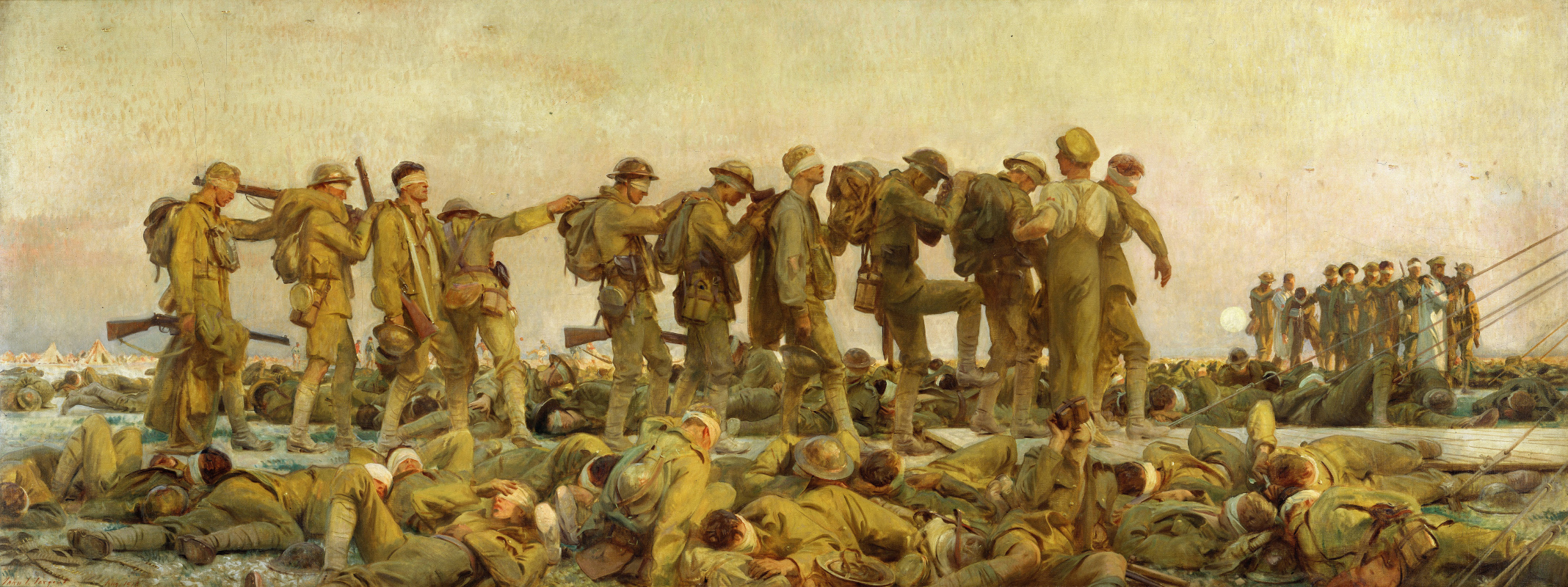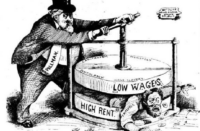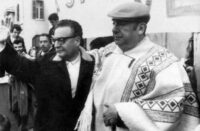The 11th of November 2018 is the centenary of the ending of the First World War. During that bloody slaughter the propagandists described it as “the war to end all wars.” A hundred years and as many wars later, the militarists in the United States and Europe—many of them the authors and overseers of present conflicts, from Afghanistan to Yemen—meet to promote that war as something noble.
Although many Irishmen fought in the war, very few wrote about it. One of our most outspoken anti-war writers is Liam O’Flaherty, who contributed two texts to world literature that condemn war as inhuman and present the real and barbaric nature of war.
Liam knew what he was writing about. He not only fought in the trenches of Flanders as a member of the British army but was wounded and shell-shocked in September 1917. His abhorrence of war is expressed poignantly in his very short story “The Discarded Soldier” and his avant-garde novel Return of the Brute” (1929).
Return of the Brute is set in the trenches and traces the dehumanisation of the soldiers. All that matters here is looting the dead for food and cigarettes. War destroys humankind, not simply by destroying lives but also by destroying that within our relationships with other people that makes us human: the capacity for compassion, for support of our fellows, for having a creative purpose, and for grieving. All these are depicted in their grotesque disintegration and deformation.
This avant-garde novel includes some silent, eerie choreographies of death’s dance, such as: “They all gaped in wonder at the horses, which looked like skeletons, dimly outlined against the horizon on the left, with their cloaked riders stooping forward from the rain. They moved very slowly in a line, staggering through shell-holes, slipping in the mud and rearing.” And, in another scene: “But nobody in the hole took any notice of the firing. Their limbs moved continuously, jerking, twisting about. Their mouths and nostrils twitched. They kept getting to their feet and sitting down again; all except Lamont who sat very still. They could no longer speak.”
“The Discarded Soldier” was never collected and is virtually unknown. It describes the sheer indifference with which a wounded soldier is dumped by the very people who callously used him as cannon fodder and who previously cried out about the glory of warfare: “Then at last he was caught by a bursting shell and hurled into the air, amid red-hot bolts of steel and showers of earth and smoke. He was crushed into a jabbering mass of pulped flesh. He was no longer a hero. He was a wreck. Capitalism did not want him. The ladies no longer cheered him. They brought him flowers in the hospital for a few months and then forgot. The ribbons faded on his breast. He was cast into the great city, homeless, unwanted, penniless.”
Seán O’Casey’s play The Silver Tassie, written in 1927–28, deals with the very same theme. Interestingly, “The Discarded Soldier” was published for the first (and probably only) time in the Daily Worker, the daily paper of the Communist Party of the USA, on 27 June 1925, at the request of Tom O’Flaherty, Liam’s brother, who worked as a daily columnist on the paper. Both were writers, and both were involved in the communist movement, being founder-members of two separate communist parties, Tom of the CPUSA and Liam of the CPI.
In an advertisement in the Daily Worker on 13 June 1925 Tom describes Liam as “a young proletarian writer who has already won an international reputation thru his books and short stories . . . One of those short stories, dealing with the civil war in Ireland, in which he fought on the side of the Republicans, is listed in the collection of the best short stories produced In Great Britain during 1923 . . . The now only twenty-six years old . . . left a little fishing village in the Arran Islands on the west coast of Ireland at an early age for college, where he was trained by the Jesuits for the propaganda mission. He is anything but grateful to his tutors as his writings show.”
Seosamh Ó Cuaig, chairperson of the Liam and Tom O’Flaherty Society, uncovered this story while researching Tom O’Flaherty. People’s World, the successor of the Daily Worker, will republish this story in full on 11 November (see www.peoplesworld.org/).
The O’Flaherty Society previewed this story in 2014 with an evocative reading by Fionnghuala Ní Choncheanainn, filmed by Eoin McDonnell of the Connolly Media Group in an atmospheric Aran setting (https://vimeo.com/183527458), at its annual O’Flaherty Festival in Árainn in 2014.






